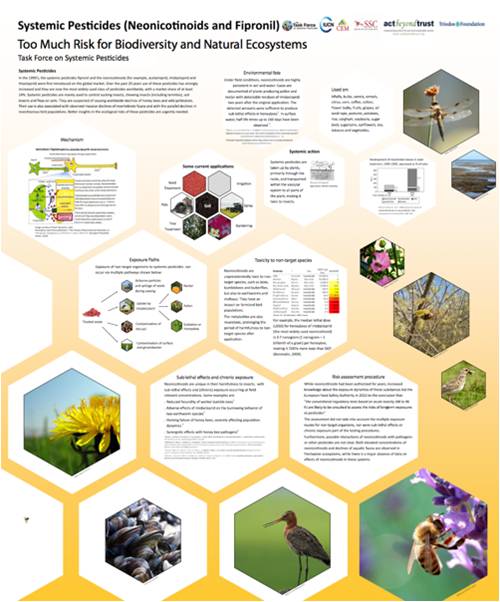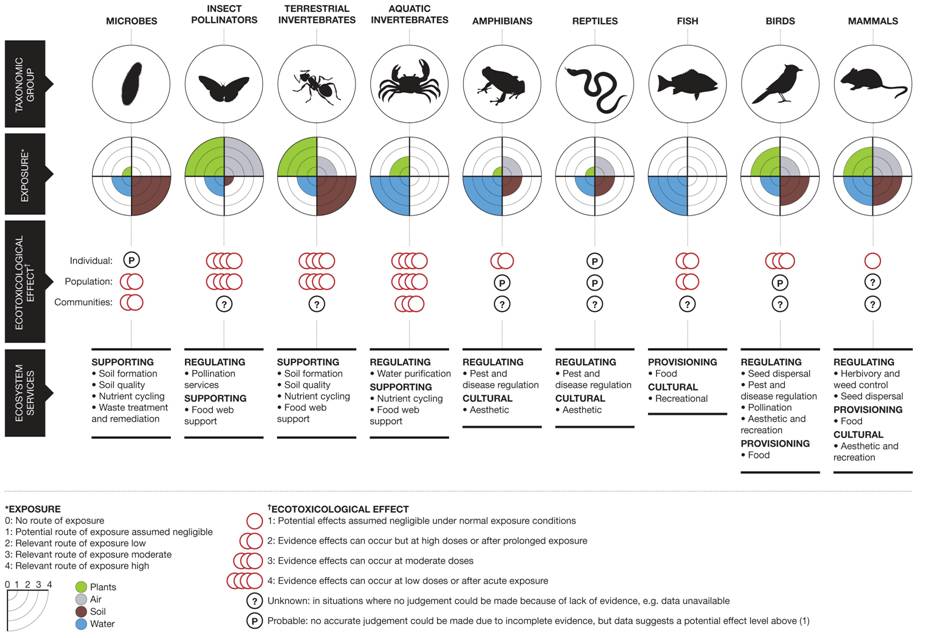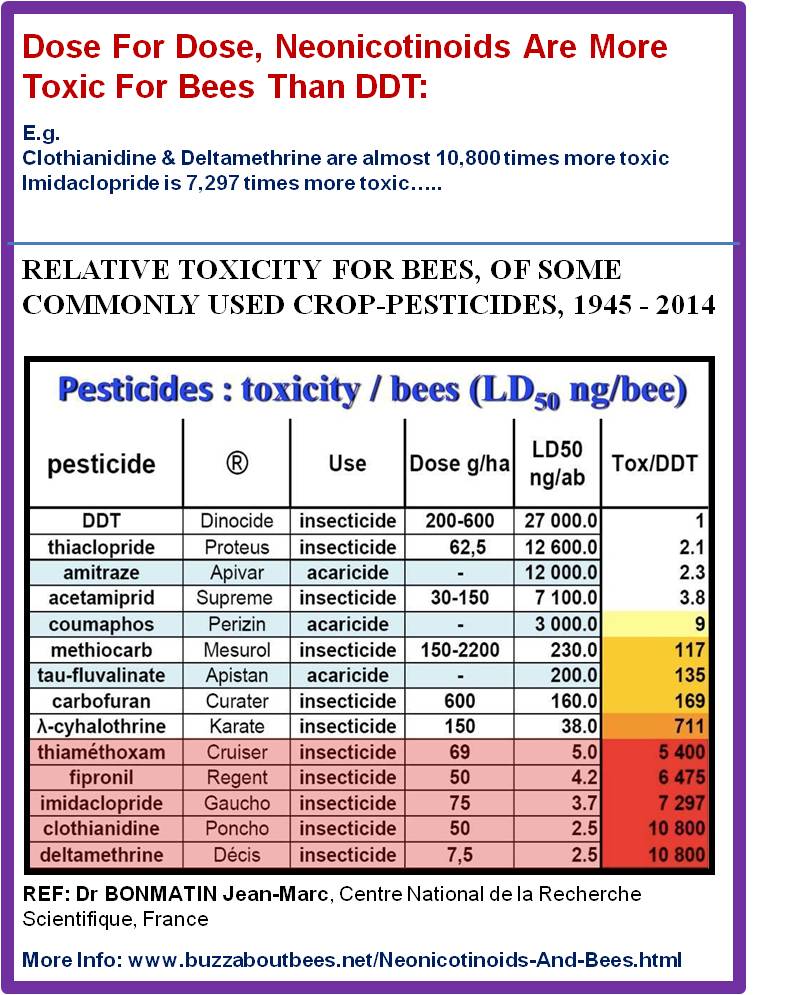World Wide Integrated Assessment
of the Impact of Systemic Pesticides (Neonicotinoids & Fipronil) on Biodiversity and Ecosystems:
Summary Of Key Findings
The World Wide Integrated Assessment of the Impact of Systemic Pesticides on Biodiversity and Ecosystems has made a synthesis of 1,121 published peer-reviewed studies spanning the last five years, including industry-sponsored ones.
It is the single most comprehensive study of neonics ever undertaken, is peer reviewed, and published as open access so that the findings and the source material can be thoroughly examined by others.
29 authors representing many disciplines synthesized the scientific knowledge of the impacts (real and potential) of these systemic pesticides.
Summary of key findings:
Insect Pollinators
- Neonics and fipronil have impacts that extend far beyond the intended crop, plant and pest species.
- In
bees, field-realistic concentrations adversely affect individual navigation,
learning, food collection, longevity, resistance to disease and fecundity.
For bumble bees, irrefutable colony-level effects have been found, with exposed colonies growing more slowly and producing significantly fewer bumble bee queens.
Field studies with free-flying bee colonies have proved difficult to perform, because control colonies invariably become contaminated with neonicotinoids, a clear demonstration of their pervasive presence in the environment.
- Insect
pollinators such as bees and butterflies are exposed to contamination through
all four routes with:
1. high exposure through air and plants
2. medium exposure through water.
- The assessment found that both individuals and populations can be adversely affected by low or acute exposure making them highly vulnerable.
- Pollinators exposed to contaminated pollen, nectar and water are harmed at field realistic concentrations.
Terrestrial Invertebrates
- Terrestrial
invertebrates such as earthworms are exposed to potential contamination
via all four routes (air, water, soil, plants) with:
1. high exposure through soil and plants
2. medium exposure through surface water and leaching
3. Low exposure via air (dusts)
- The assessment found that both individuals and populations can be adversely affected by low or acute (i.e. ongoing) exposure making them highly vulnerable at field realistic concentrations – i.e., the concentrations which can be found in agriculture. These effects range from behaviour modification such as feeding inhibitions to mortality.
- These species provide a myriad of ecosystem services, including the regulation and cycling of nutrients, carbon storage, and support for plant growth and are dependent on the diverse and complex biological communities that are present in soils.
Aquatic invertebrates
- Aquatic invertebrates such as freshwater snails and
water fleas which are exposed via water and potentially plants, are
vulnerable to low and acute exposure and which can be affected at the
individual, population and community levels.
- The moderate to high water solubility of neonicotinoids enables them to contaminate both surface and groundwater and hence leach into waterways, where high concentrations have depleted aquatic insect abundance and diversity.
- The impacts identified on this group are reduced feeding behaviour, impaired growth and mobility.
Birds
While vertebrate
animals are generally less susceptible, bird populations are at risk from
eating crop seeds treated with systemic insecticides.
Fish, Reptiles And Amphibians
- Reptile numbers have
been known to decline due to depletion of their insect prey.
- Microbes, fish and
amphibians were found to be affected after high levels of or prolonged
exposure.
- Samples taken in water from around the world have been found to exceed ecotoxicological limits on a regular basis.
We Need Biodiversity
This is an important infographic downloadable in the link provided top right.
It summarizes the impact of neonicotinoids on different species, and the role those species play in the eco-system.
Dose For Dose, Neonicotinoids Are More Toxic For Bees Than DDT:


